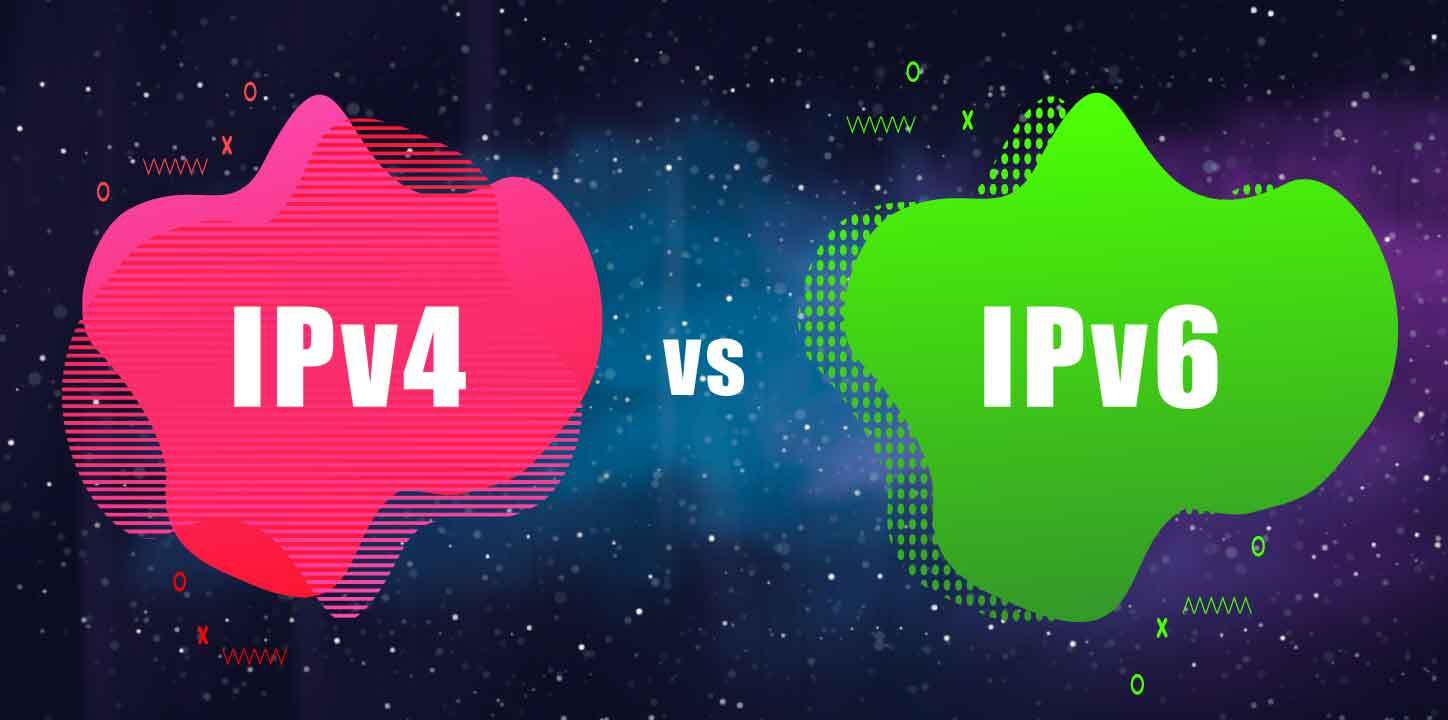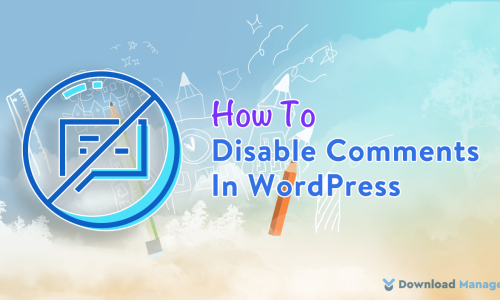
IPv4 vs IPv6: Which One Is Better for You?
IP addresses are what allow computers and devices to communicate with each other over the internet. The “IP” stands for Internet Protocol and the “v” in the name suggests versions of Internet Protocol. IPv4 is the first stable version. That’s the reason we don’t hear about IPv1, IPv2, and IPv3. IPv5 was created to experiment with streaming voice and video. This protocol version was never released to the public because it served solely as an experimental real-time streaming protocol. So, there are actually two types of IP versions IPv4 and IPv6 but these two versions differ in several aspects. This post is going to outline IPv4 vs IPv6. And going to help you to choose which one is better for you. We will also discuss what happened to the IPv5.
What is an IP Address?
The internet needs a way to differentiate between different computers, routers, and websites. IP addresses provide a way of doing so and form an essential part of how the internet works. IP addresses are an identifying number that is associated with a specific computer or computer network. They can be compared to a Social Security Number (SSN) since each one is unique to the computer or user it is assigned to.
When sending data across a network, a computer divides the information into data packets. These packets include the header which includes the destination IP address, sending IP address, and other information. It also includes the payload, which is the actual data you’re sending. All these things make the process of data transfer faster and more efficient.
Binary values make up IP addresses and drive the routing of all data over the Internet. The IP address allows the computers to send and receive information when they connect to the internet. The IP works alongside the Transmission Control Protocol (TCP) to ensure everything connected to the internet knows how and where to send traffic. That’s why you sometimes see it as TCP/IP.
Each IP address is a string of numbers separated by periods. A set of four numbers expresses them; for example, an address might be 182.157.1.28. Each number in the set can range from 0 to 255. So, the full IP addressing range goes from 0.0.0.0 to 255.255.255.255.
What is IPv4?
People refer to Internet Protocol version 4 as IPv4. It is the most common protocol on the web. It came into action by deploying on SATNET in 1982 and on the ARPANET in January 1983.
IPv4 furnishes both the identification (IP addresses) for each device on the Internet and the rules that govern how data packets transmit between those devices. Being a connectionless protocol, it makes the best effort to deliver the packet to the destination.
An IPv4 address consists of four decimal numbers, separated by three dots, ranging from 0 to 255, such as:
100.101.102.103
As there are only 232 unique hosts in this decimal format, there are only about 4.3 billion IPv4 addresses.
However, entities reserve some large blocks of these addresses for private networks, rendering them unavailable for public use. With the development of the Internet, it is normal that the quantity of unused IPv4 locations will in the long run out because each gadget including PCs, cell phones, and amusement supports associated with the Internet requires an address. Still, users widely employ IPv4, contributing almost 95% of internet traffic to date, as compared to IPv6.
What is IPv6?
The Internet Engineering Task Force (IETF) developed and introduced IPv6 or Internet Protocol in December 1995. They develop the technical standards required for the internet to deal with the long-anticipated problem of IPv4 address exhaustion. It serves as the most recent version of the internet protocol and is used similarly to IPv4.
There has been a massive increase in devices connected to the Internet in the last decade. With the number of devices that exist, we will need all the IP addresses possibly. The internet assigns a particular unique IP address to each device for identification and location definition. IPv6 has the potential to provide an infinite number of addresses to devices and is replacing IPv4 to cater to the growing number of networks globally and to solve the IP address exhaustion problem.
IPv6 can support 128-bit scheme addresses and allows 340 trillion, trillion, trillion, basically triple trillion devices to have their unique address. In IPv6, addresses are represented in 8 groups with colons separating every four digits, based on hexadecimal. IPv4 uses numeric addressing and IPv6 uses alphanumeric. Each section has a value between 0 and FFFF. To write a 16-bit number you have to use both 0-9 and also A-F. An example of a full IPv6 address could be:
1234:ABCD:1234:ABCD:1234:ABCD:1234:ABCD
The address is a long line of digits that can be shortened using a shortening technique to not confuse. It improves performance and can auto-configure itself. It will no longer need the use of NAT. More importantly, it’s more secure.
What Happened to IPv5?
In all of the debates about IPv4 vs IPv6, many people think about what happened to IPv5. Whether IPv5 has ever existed? If so, what happened to it? Why does the world seem to overlook it?
The answer is, indeed, IPv5 did exist. To understand why there is a miss between 4 and 6, we must review some Internet history.
In the late 1970s, a protocol named Internet Stream Protocol or ST was created for the experimental transmission of voice, video, and distributed simulation. Originally, the ST was IPv5 which stands for version 5 of the Internet Protocol.
IPv5 was good at transferring packets of information across specific frequencies. However, it never gained acceptance as an official IP. Larger corporations like Apple, NeXT, and Sun Microsystems experimentally used it to ensure streamlined services across a network.
We all know that before IPv5 came into existence, there was IPv4. IPV5 used the same addressing system as IPv4, which is 32-bit. Each address consisted of four sets of numbers between 0 and 255 separated by three dots. This limited the number allowed to only 4.3 billion addresses.
IPv4 also used 32-bit addressing and allowed only 4.3 billion addresses. As soon as more companies and individuals started accessing the Internet globally at a rapid pace, these addresses were soon exhausted. Since IPv5 also used 32-bit addressing, the companies thought that it would again limit the ability to generate IPv5 addresses and hence decided against adopting it as a standard protocol.
The abandonment of IPv5 by all these major tech companies discouraged others from using IPv5. The successful launching of IPv5 falls apart. The community did not accept it as the next IP. IPv6 inherited the promising features of IPv5, and it gave the base for the voice-over IP tech that currently all the world uses for communicating. But, even after developing IPv6, we see IPv4 in the market but IPv5 has not come into existence.
Difference between IPv4 vs IPv6:
Both IPv4 vs IPv6 are popular choices in the market. However, there are some technical differences between IPv4 and IPv6. The following sections will shed some light on the key differences between both protocol versions. Next, we’re going to dive deeper into the differences between IPv4 and IPv6 based on two important aspects: speed and security.
Key Differences:
- IPv4 is the 4th version of the IP and was published in 1981. IPv6 is the latest version of the IP, and it became a draft standard in 1998 and was later established as an Internet Standard in 2017.
- The major difference between the IPv4 and IPv6 addresses is that the IPv4 address is 32-bit while the length of IPv6 is 128-bit.
- IPv4 can generate address space up to 4.29 billion whereas IPv6 can generate up to 3.4 x 10^38 of address space.
- IPv4 uses four one-byte decimal numbers separated by a dot. On the other hand, IPv6 uses hexadecimal numbers separated by colons.
- IPv4 and IPv6 are numeric and alphanumeric addressing methods respectively.
- IPv6 has twice as large packet headers as IPv4.
- IPv4 packets utilize 12 headers while IPv6 uses 8 headers.
- IPv6 has packet flow identification in the header while IPv4 offers no packet flow information.
- IPv6 has a built-in network security layer (IPsec) and Quality of Service (QoS). Which IPv4 has not.
- IPv6 eliminates Network Address Translation (NAT) but IPv4 needs NAT.
- IPv4 has no connection integrity, whereas IPv6 has end-to-end connection integrity. From the end-to-end connectivity perspective, IPv6 provides better results than IPv4.
- For mapping MAC addresses, IPv4 uses ARP while IPv6 makes use of NDP.
- IPv4 offers support for the Virtual Length Subnet Mask (VLSM), whereas there is no support provided for VLSM in the case of IPv6.
- IPv4 supports dynamic host configuration protocol setup, while IPv6 supports renumbering address setup.
- Only IPv4 supports the broadcasting feature, not IPv6.
- The checksum field is absent in IPv6 and present in IPv4.
- Multicasting is part of the base specifications in IPv6, while it’s optional in IPv4.
IPv4 vs IPv6 – Speed:
Though it looks like IPv6 is faster than IPv4, under most circumstances, the difference amounts to milliseconds. So it won’t affect the users. One of the security service providers Sucuri ran a series of tests on sites that support IPv4 and IPv6. They found both IPv4 and IPv6 delivered the same speed for direct connections.
However, some evidence suggests that IPv6 is faster than IPv4. Like Akamai tested a single URL on an iPhone/mobile network and saw that the site had a median load time that was 5% faster with IPv6 than IPv4. Another observation by Facebook’s Engineering states that accessing Facebook over IPv6 can be 10-15% faster than using IPv4.
The difference between IPv4 and IPv6 that makes the latter slightly faster is that IPv6 connections access the network directly. Even though IPv4 has smaller packet headers than IPv6, it has to go through stateful NAT servers to travel over the web. Since IPv6 can send data directly between devices, it just needs to check the data was transmitted correctly. On the other hand, IPv4 needs to do error checking at multiple levels to ensure the data is intact and accurate when it’s going to the other device. So yes, in terms of speeds, IPv6 is slightly faster. However, IPv6 also has larger packet headers, so it could potentially be slower for some use cases.
IPv4 vs IPv6 – Security:
The difference between IPv4 and IPv6 security is not extraordinary. IP Security (IPSec) is a series of IETF security protocols for security, authentication, and data integrity. IPSec is fully integrated into IPv6. But IPv4 has been significantly updated over the years; the same IPSec is now available for IPv4. A properly configured IPv4 network can be as secure as an IPv6 network; it’s up to network providers and end-users.
IPv6 provides two security headers that can be used separately or together: the Authentication Header (AH) and Encapsulating Security Payload (ESP). Authentication Header provides data-origin authentication and protection against replay attacks. On the other side, ESP delivers connectionless integrity, data origin authentication, protection against replay attacks, and limited traffic flow confidentiality, as well as privacy and confidentiality through encryption of the payload.
Another security benefit IPv6 has is that it can run end-to-end encryption and integrity-checking, making man-in-the-middle (MitM) attacks more difficult.
IPv6 also uses the Secure Neighbor Discovery (SEND) protocol, resulting in more secure name resolution. This makes it more challenging for attackers to redirect traffic between two legitimate hosts and observe or manipulate the conversation.
IPv6 might bring better security solutions than IPv4, but those security features also depend on the proper design and implementation of IPv6. It’s also essential to activate a firewall, access control system, and antivirus software.
IPv4 vs IPv6: Which One Is Better?
Just like every house has a unique number in a physical address, every device on the internet has a unique IP address. This helps devices to communicate with each other and route data to the right destination. According to the reports, about 127 new devices are connecting to the internet every second. With the number of increasing devices, the demand for IP addresses increasing.
But IPv4 has a theoretical limit of 4.3 billion addresses and only a few IPv4 addresses are available nowadays. Even RIPE NCC, one of the Regional Internet Registries (RIRs), has announced that it has run out of IPv4 addresses. For the existing network operators, it will become increasingly difficult and expensive to obtain new IPv4 addresses to grow networks as the prices of IPv4 addresses are determined by supply and demand. So with unique IPv4 addresses running out, we need an alternative. And that alternative is IPv6.
IPv6 uses a 128-bit address format and offers 1,028 times as many unique addresses as IPv4. It brings the ability to belong to many networks simultaneously, with a unique address on each network, and the ability to combine multiple enterprise networks without readdressing. IPv6 enables end-to-end connectivity at the IP layer by eliminating the need for Network Address Translation (NAT), one of the workarounds designed to conserve IPv4 addresses. This transition opens the door for new and valuable services. Peer-to-peer networks are easier to create and maintain, and services such as VoIP and Quality of Service (QoS) become more robust.
IPv6 has numerous benefits over its predecessor and should be the first choice for almost all organizations. Its better performance, effectiveness, and efficiency make it a better version than any before. And that helps realize the company’s goals and objectives. Most importantly, by diminishing the measure of steering tables, IPv6 makes directing more productive and progressive. Currently, many organizations are leading toward ipv6 due to its superior performance.
The good news is that the transition to IPv6 has already started. According to Google, the worldwide adoption of IPV6 is currently at 37%. As more internet service providers (ISPs), mobile carriers, and other large enterprises migrate to IPv6, the number of websites that support IPv6 and users who upgrade their software for IPv6 are also increasing. The migration from IPv4 to IPv6 might progress very slowly but considering long-term network growth, network operators will need to implement IPv6 sooner or later.
Do You Need to Switch from IPv4 to IPv6 Right Away?
The answer is, No. The main reason you should not switch from IPv4 to IPv6 right away is that the sites you visit may not support IPv6. At this time, even Google Cloud does not fully support IPv6. Reports suggest that Google Cloud has IPv6 support on its roadmap, indicating a potential change in the future. However, there will be a permanent migration to IPv6, but it will take decades to achieve.
On the other hand, to use IPv6, you need an IPv6-compatible operating system, a router with IPv6 support, and an ISP with IPv6 enabled. Many modern desktop operating systems are now compatible with IPv6 but not all. While switching to IPv6 you need to buy a new router and make sure to check your router’s specifications details to see if it supports IPv6.
There is much debate about which is better, IPv4 or IPv6. But really, it’s about your specific needs. In this article, we have discussed both IPv4 and IPv6. Hope that will help you to decide which one fits your needs.
To get more helpful articles check our Blog page. Also, don’t forget to subscribe to our YouTube channel and follow our Facebook page.









